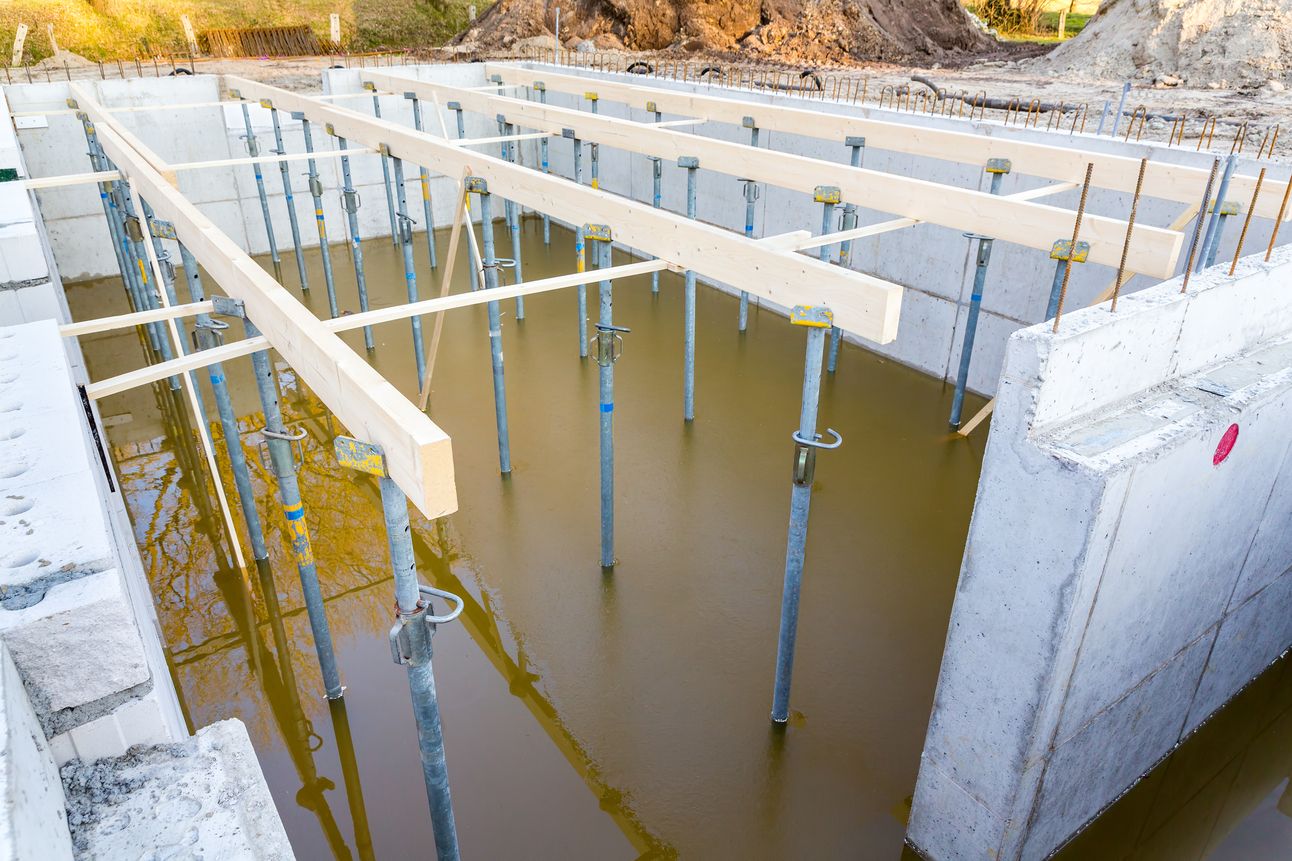In the face of a changing climate and increasing pressure on the UK’s water resources, water resilience can no longer be an afterthought on construction sites. From torrential rain events to summer droughts, the challenges posed by extreme weather now demand a proactive, site-level response. And that starts before the first sod is turned.

Embedding water resilience into construction planning is not just about protecting the bottom line—it’s about futureproofing the built environment. With regulators, insurers, and investors taking a harder line on risk, projects that fail to account for water vulnerability may struggle to win approval, funding, or even operate safely in the long run.
Why Water Resilience Matters on Site
Water resilience refers to a site’s ability to anticipate, absorb, and recover from water-related shocks—whether that's flooding, water scarcity, or pollution. For construction professionals, this cuts across multiple domains: stormwater management, drainage, groundwater protection, temporary supply, and even the impact of construction activities on the surrounding hydrology.
Without adequate planning, a site can become a flashpoint for risk. Poor drainage leads to pooling, erosion and delays. Over-abstraction can spark regulatory enforcement. And insufficient mitigation can turn neighbouring communities and local authorities against the project.
In an era of rising public scrutiny and net-zero targets, water resilience must be treated as a core pillar of construction sustainability.
Start with the Site Water Management Plan
A robust Site Water Management Plan (SWMP) should be the foundation of any water-resilient project. Although no longer mandatory in England since 2013, SWMPs remain a best practice encouraged by bodies such as the Construction Industry Research and Information Association (CIRIA), the Considerate Constructors Scheme, and many local planning authorities.
Key elements include:
Baseline water assessment (including groundwater, surface water, flood risk)
Mapping of water entry and exit points
Water demand forecasting for different build stages
Pollution prevention measures
Contingency planning for drought or flood events
Digital tools such as BIM-integrated SWMPs and real-time telemetry systems are now making it easier to monitor and manage site water in dynamic conditions.
Manage Stormwater at Source
Urban development increases impermeable surfaces—roofs, roads, and concrete slabs—that prevent rainfall from soaking into the ground. Without mitigation, this runoff can overwhelm drainage systems and pollute local watercourses.
This is where Sustainable Drainage Systems (SuDS) come in. SuDS are designed to manage rainfall close to where it falls, using techniques such as:
Permeable paving
Swales and rain gardens
Detention basins
Green roofs
Filter drains
Attenuation tanks

Attenution tanks being installed at the BBC Headquarters in Birmingham, UK
Not only do these systems help prevent flooding and water pollution, but they also offer co-benefits in biodiversity and aesthetics—making them popular with planners and communities alike.
Many local authorities now require SuDS as a condition for planning approval, particularly in major developments and flood-prone areas. Projects that fail to integrate them may face rejection or costly retrofits.
Temporary Supplies Need Sustainable Thinking
Temporary water supplies on site—used for concrete mixing, dust suppression, welfare facilities, and equipment cleaning—are often overlooked in sustainability planning. But the combined impact can be significant, particularly on large or long-running projects.
Where feasible, contractors should look to:
Harvest rainwater from temporary structures for non-potable use
Install water-saving fittings in site offices and washrooms
Use dry suppression methods (such as misting or polymer-based solutions) to minimise dust without excessive water use
Recycle wastewater from wheel washes or concrete batching areas
Some contractors are now deploying closed-loop systems, where water is filtered and reused multiple times before disposal. While the upfront cost is higher, the long-term savings—in both water and compliance risks—are considerable.
Know Your Legal Obligations
Water-related regulations in construction are tightening. Under the Environmental Permitting Regulations, any site discharging water (including silt-laden runoff or concrete washout) into surface or groundwater may require a permit from the Environment Agency.
Key rules include:
Abstraction limits: Abstracting more than 20 cubic metres per day usually requires a licence.
Pollution control: Runoff containing oils, silts, or chemicals must not be allowed to enter drains or watercourses.
Flood Risk Assessments (FRAs): Required for many developments, particularly in Flood Zones 2 and 3.
Failing to comply can lead to fines, stop notices, and reputational damage. Water resilience is not just a best practice—it’s a legal safeguard.
Engage Stakeholders Early
Water resilience isn’t achieved in a silo. Early engagement with:
Planning authorities
Drainage boards
Water companies
Neighbouring landowners
Environmental NGOs
...can uncover hidden risks, secure faster approvals, and build goodwill. For example, aligning construction drainage plans with a local catchment strategy may help unlock Section 106 or biodiversity offsetting funds.
It also makes commercial sense. According to the UK Green Building Council, developers that incorporate environmental features—like natural water management—can see enhanced asset values and higher demand from buyers and tenants.
The Cost of Inaction
Flooded foundations. Erosion of earthworks. Delays caused by tanker shortages during droughts. The costs of poor water planning are mounting—and yet many contractors continue to see water as an operational afterthought rather than a strategic asset.
By adopting a water-resilient mindset from the outset, construction firms can protect their projects, communities, and climate commitments.
In a sector facing increasing scrutiny for its environmental impacts, the ability to manage water intelligently could be the defining characteristic of the next generation of successful developers.




